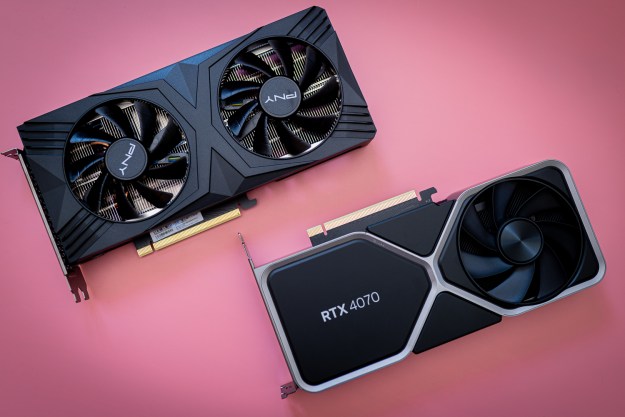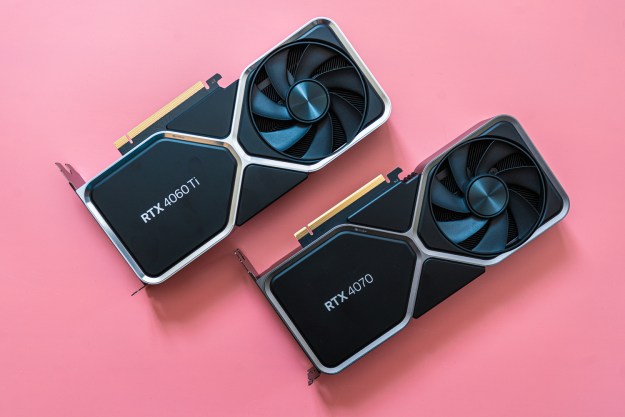Computex 2022 is coming to a close, following a major AMD keynote and packed Nvidia presentation. Intel didn’t make an appearance this year, and Nvidia’s keynote focused mostly on enterprise, but there is still a slew of exciting announcements from Computex 2022.
We rounded up the most exciting new products revealed at the show — and even went a little further. We’re including some products announced during Computex, even if they weren’t technically at the show, so you can get up to speed with all of the fun new tech coming down the pike.
AMD Ryzen 7000

Undoubtedly, the biggest reveal from Computex came from AMD with the announcement of Ryzen 7000 CPUs. Built on the new Zen 4 architecture, the chips are slated to launch in the fall with more than a 15% improvement in single-thread performance, according to AMD. Details are light for now, but AMD says we’ll learn much more in the coming months.
AMD still teased the performance of the upcoming range, as well as confirmed the flagship chip will arrive with 16 cores. That model was shown boosting to 5.5GHz in Ghostwire Tokyo. AMD threw the competing Intel Core i9-12900K under the bus, too, showing the 16-core Ryzen 7000 CPU finishing a Blender render in 31% less time than the Intel chip.

With a new generation, we get a new chipset, but this time with the redesigned AM5 socket. AMD is introducing a new chipset called X670E for the most extreme overclockers, but the normal X670 and B650 chipsets remain unchanged. The most exciting news is the addition of DDR5 and PCIe 5.0 for this new platform.
We’ve already seen almost a dozen X670 motherboards at Computex, and we’re bound to see dozens more over the coming weeks. The new chips come with integrated graphics for the first time, but AMD says that Ryzen 7000 graphics aren’t built for gaming.
The first PCIe 5.0 SSDs
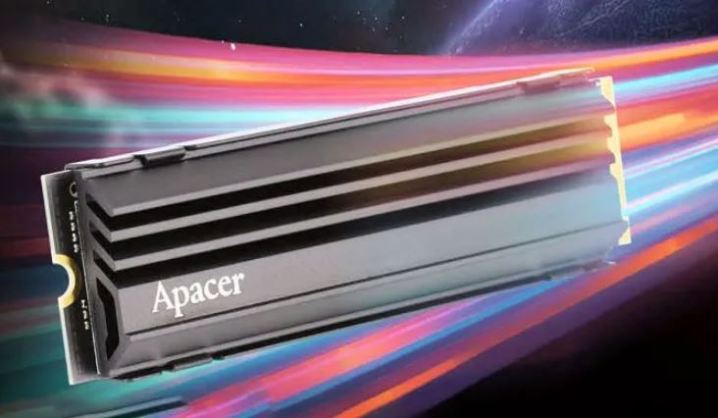
PCIe 5.0 on Ryzen 7000 means we have some super-speedy SSDs on the way. AMD said that it would launch the first PCIe 5.0 SSDs alongside the new CPUs, but some companies are jumping the gun. Apacer and Zadak announced new PCIe 5.0 SSDs that will arrive later this year, and they’re insanely fast.
How fast? Well, Apacer and Zadak say they reach read speeds of 13,000MB/s and write speeds of 12,000MB/s. That’s nearly double the speed of the best SSDs you can buy today. It’s just a sip before the flood, as we expect loads of new PCIe 5.0 SSDs to launch in the second half of the year.
Corsair Voyager

Power supplies, CPU coolers, gaming keyboards — none of it was enough for Corsair, it seems. The company announced its first gaming laptop during AMD’s keynote, and it’s coming later this year as part of AMD’s Advantage platform.
The Corsair Voyager uses all AMD hardware, but we don’t know the exact specs now. However, we know that the Voyager comes with a built-in streaming command center powered by Elgato software, as well as a “high-fidelity” 1080p streaming webcam, as AMD describes it. Although we don’t know the specs, AMD confirmed the laptop is launching with the latest generations available — that means Ryzen 6000 for the CPU and RX 6000 for the GPU, likely the flagship options from each range.
A new liquid-cooled GPU from Nvidia
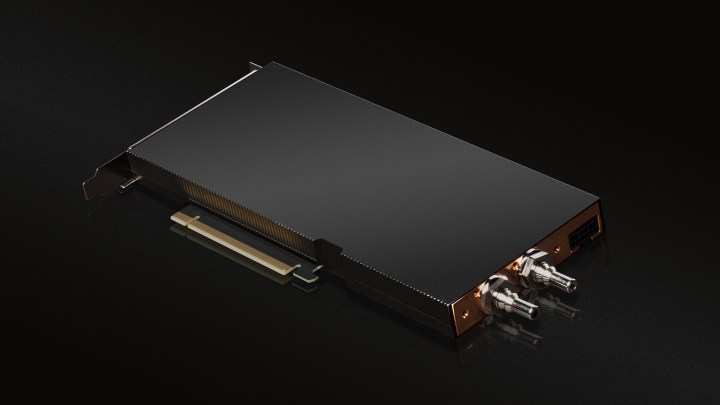
Nvidia didn’t announce new gaming GPUs during Computex — despite strong rumors about a potential GTX 1630 — but Team Green still had some announcements in the graphics department. The company will release liquid-cooled versions of its A100 and H100 GPUs for data centers later this year in an effort to reduce energy usage and improve efficiency.
You won’t be able to buy these cards — or, at least, it would be wasted money compared to the best gaming GPUs — but it’s still exciting to see liquid cooling as an option in mainstream server racks. And let’s be honest, they look awesome.
Asus’ 500Hz gaming monitor

Nvidia’s keynote may have been light on gaming announcements, but the company still revealed a 500Hz gaming monitor coming from Asus. It’s not the first 500Hz monitor, but it’s among the first models for highly competitive gamers. Details are light for now, but we know it’s a 24-inch 1080p display, which of course is capable an insanely high 500Hz refresh rate.
It also comes with an Nvidia Reflex module inside, allowing you to drill down on your system latency in competitive titles. We don’t know the release date or pricing, but it’s safe to say the display will be expensive. Asus’ previous best, the 360Hz ROG Swift PG259QNR, still goes for around $600, and it’s two years old.
The second QD-OLED monitor

Alienware was the first one to market with a QD-OLED monitor — you can read about it in our Alienware 34 QD-OLED review — but MSI isn’t far behind. MSI announced a 34-inch QD-OLED monitor with a 175Hz refresh rate at the show, marking a trend toward this vibrant display tech in gaming monitors in the future.
This year was packed with monitors, so make sure to check out our roundup of the best monitors announced at Computex 2022.
SteelSeries Arctis Nova Pro Wireless
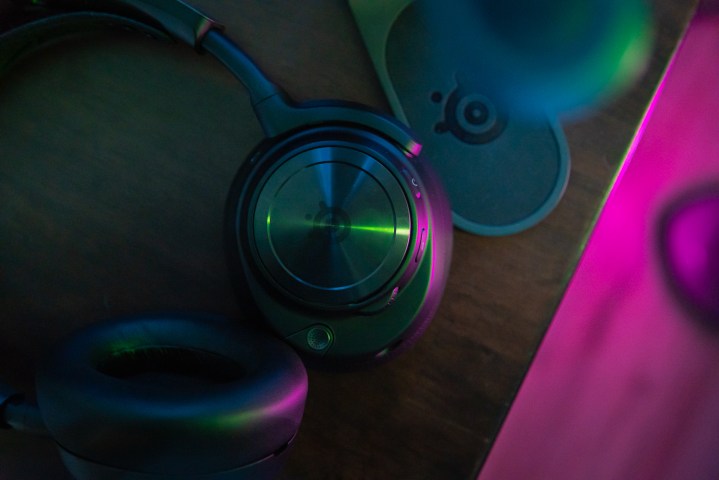
SteelSeries isn’t at Computex, but the company lined up the launch of its new Arctis Nova Pro Wireless headset with the show. You can read our full thoughts in our SteelSeries Arctis Nova Pro Wireless review. For now, you should know that it might be the ultimate gaming headset, fit with features and improvements that gamers have been begging for.
It supports Bluetooth and 2.4GHz simultaneously, and it comes with active noise cancellation. Most importantly, you can retract the microphone fully into the earcup and hide it, allowing you to use the Arctis Nova Pro Wireless while you’re out and about.
Editors' Recommendations
- All of the exciting new GPUs still coming in 2024
- As a lifelong PC gamer, these are the apps I couldn’t live without
- AMD’s GPUs had a bigger year in 2023 than you might realize
- Nvidia is reportedly ‘worried that it’s missing the boat’
- Microsoft might end one of the most annoying GPU wars



